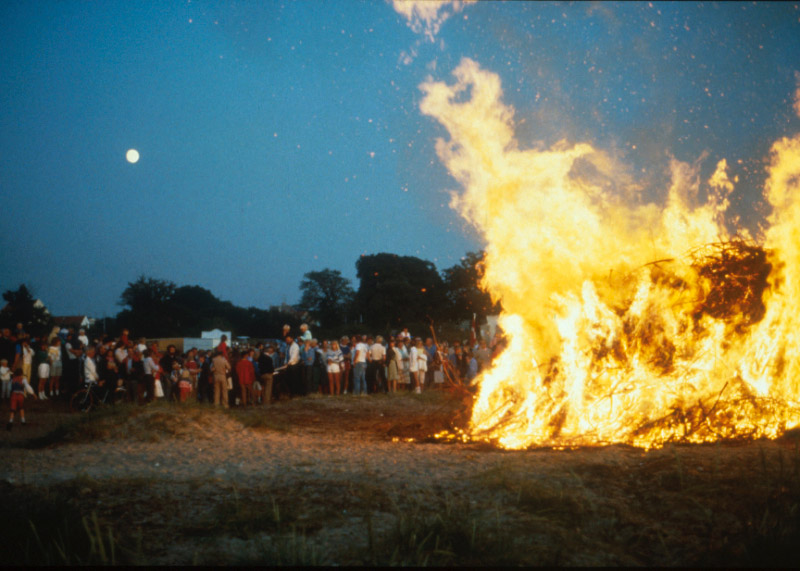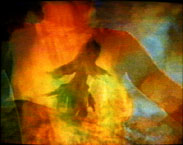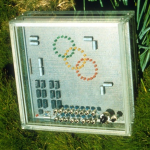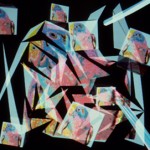© 1986 Vibeke Sorensen Produced at the CalArts CAL
3 minutes, NTSC color video, stereo sound Music by Melissa Tong
In 1983, I began working on a new piece where the historical oppression of women was the focus and content, and the music video provided structure. I wanted to infuse alternative content into a popular form. To a large extent, I was reacting to sexism in the computer graphics community, which had been predominantly white and male. Since women and artists had been relegated to few and often offensive stereotypes, I needed to negotiate strategies for dealing with it and getting on with my work.
I began work on several pieces which deal with an ancient Danish summer solstice ritual. On the longest day of the year in June, bonfires are lighted all along the beaches like pearls on a necklace. Originally a fertility ritual intended to celebrate light and encourage crops to grow, this dramatic and archetypal ritual was adopted by a changed society in the late 15th century to persecute women thought to be witches, by burning them on top of the fires. Today, of course, women are not burned anymore, although effigies of witches sometimes are. In what is today a very progressive society that values and respects independent women, this history is very surprising and disturbing. So, to better understand the meaning of the rituals and their transformations over time, I consulted an ethnologist from the Danish Folklore Archives, Birgit Hansen. I made several pieces, including Solstice (1986), which, in a way, has become my personal ritual based on the larger one. Drawing on my own cultural heritage, it incorporates documentary footage, as well as dance and computer animation. To me, this ritual symbolizes the continuing conflict over womens’ nature that exists in various forms around the world today, including technology, television and even the music video form that I used for structure. Today, instead of ritualistic burning of women on top of bonfires, women are burned in the fire of mass media, often perpetuating damaging stereotypes that reinforce oppression and maltreatment. This piece helped me to understand, but not accept, the contradictions in attitudes towards women both in my own culture and in others with similar influences.
A few years later, I created Every Month a Lunar Count (1991), which is a text-image piece that runs live on a MacIntosh computer. Confronting directly my experiences with sexism, it is also inspired by the Venus of Laussel and writings about her. These writings state that the time factored marks on the crescent in her hand suggest that astronomical and mathematical reasoning may have originated in womens’ recognition in themselves, of the link between celestial and biological rhythms. The subtext of my piece is that computers are not in conflict with women’s nature, that they probably descend from women as well as from men.




